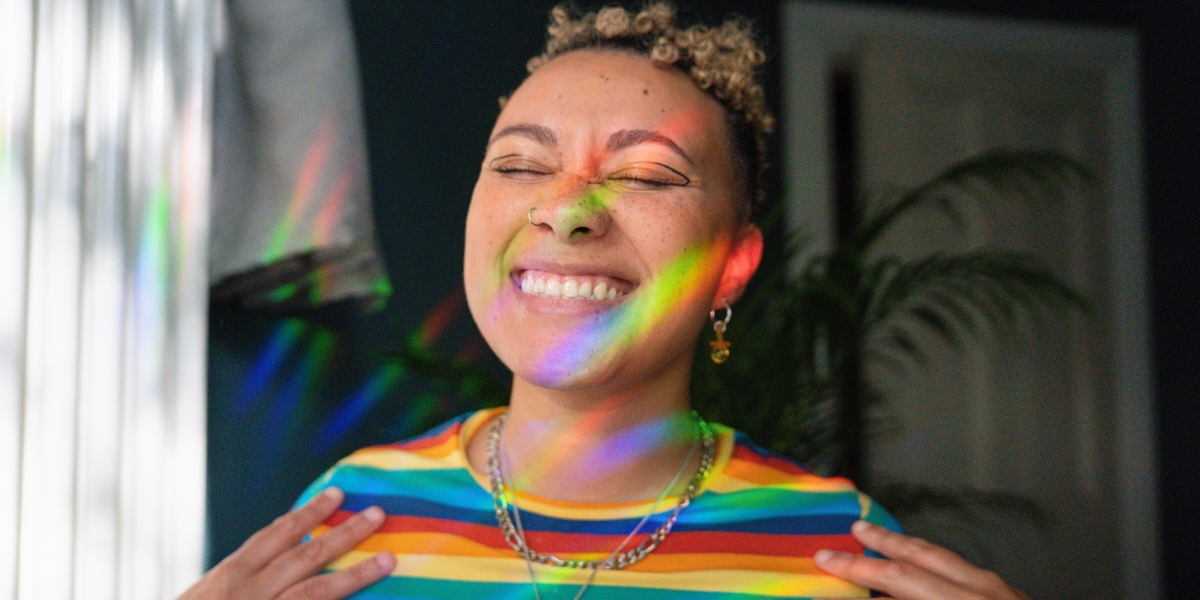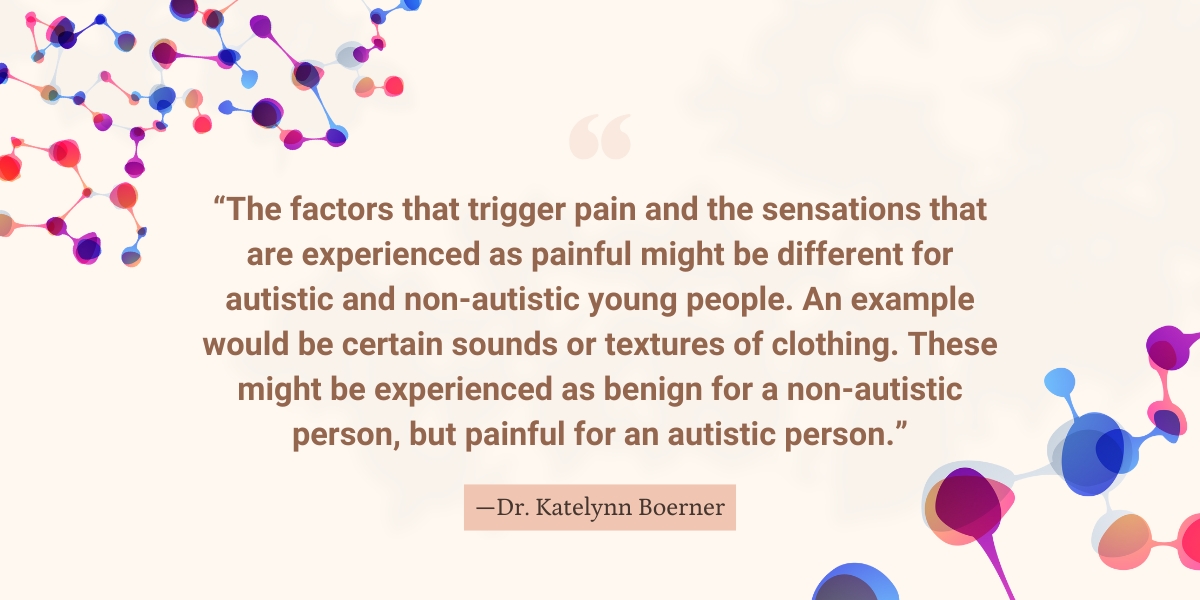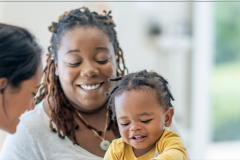
Dr. Katelynn Boerner is a Brain, Behaviour & Development investigator at BC Children’s Hospital Research Institute (BCCHR), an assistant professor in the Division of Developmental Pediatrics in the Faculty of Medicine at the University of British Columbia (UBC), and a psychologist with the Complex Pain Service at BC Children’s Hospital.
Dr. Boerner has been honoured with the 2025 Early Career Award in Pediatric Pain Research from the International Association for the Study of Pain (IASP), which recognizes outstanding achievement in pediatric pain research.
Despite being early in her career, Dr. Boerner has received several major funding awards, authored 45 peer-reviewed publications, four book chapters, and more than 75 presentations. A recognized emerging leader and innovator, she has built a dynamic research program that addresses the intersection of sex, gender, and pain.
Dr. Boerner has also developed publicly available resources such as IASP fact sheets and online training modules. She is deeply committed to effective knowledge translation, engaging with media, and delivering community-focused presentations. Her work emphasizes equity and inclusion, ensuring it has a meaningful and far-reaching global impact.
We recently sat down with Dr. Boerner to find out about her current research.
Autism and pain
Pain experienced by autistic youth is not well understood, even though autistic children and teens account for many pain-related health-care visits. Dr. Boerner, Dr. Tim Oberlander, and their team hope their latest research will lead to:
- greater clarity about pain experienced by autistic people,
- better treatment options for autistic individuals living with pain, and
- more ways to prevent pain for neurodivergent individuals.
What inspired you and your team to study pain experienced by autistic young people?
Over the years, we noticed increasing numbers of autistic young people attending the Complex Pain Service. From speaking with international collaborators, we know this is not exclusive to British Columbia or to Canada.
While we’re seeing more autistic people, we don’t always know if we’re serving them well. We know we need to adapt the ways we assess and treat pain for the autistic community, but we don’t have a good evidence base for doing so and very little research to help support us in our decision making.
What knowledge gaps are you aiming to fill with your study?
There’s very little research on the pain experiences of autistic people, and even less on the pain experiences of autistic children and youth. We want to get a better sense of the prevalence and specific features of pain experienced by autistic young people. We want to know how often they experience pain and what other factors are associated with their pain.
We also hope to learn more about factors that we don’t typically consider in pain research — factors that might impact how someone experiences or expresses their pain. These can include sensory processing differences and masking or camouflaging — the intentional or unintentional suppression of autistic behaviours and enactment of non-autistic traits with the goal of being perceived as neurotypical. These and many other factors unique to autism could really impact the daily experience of pain.
Additionally, we recently completed a systematic review focused on the representation of autistic young people in clinical trials of pain treatments. The majority of studies we looked at have some level of implicit exclusion leading to autistic young people not being able to participate. Inaccessible research practices have led to widespread under-representation of autistic young people in the medical literature.
To make our research more accessible, we’ve recruited autistic researchers and parents of autistic children as members of our research team. We’re also engaging community partners to ensure that lived experience informs our research practices.
Lastly and very importantly, we’re hoping to challenge a glaring and long-standing assumption: historically, there’s been a belief in the research literature and in clinical practice that autistic young people either don’t feel pain or don’t feel pain as intensely as non-autistic young people. I expect that we’re going to be able to say with absolute certainty that autistic young people do indeed feel all different types of pain. It’s likely that we just haven’t been measuring it properly.

What are some ways that pain experiences might differ between autistic and neurotypical young people?
In the very limited research that has been done, one of the biggest findings is that there’s a lot more variability in pain experience for autistic folks. There can be both hyper- and hypo-responsivity to pain.
Also, the factors that trigger pain and the sensations that are experienced as painful might be different for autistic and non-autistic young people. An example would be certain sounds or textures of clothing. These might be experienced as benign for a non-autistic person, but painful for an autistic person.
We also know that some of the differences could be explained by the way that pain is communicated. The scales we use to measure pain and the language we have to talk about pain were developed to be used with non-autistic people and often rely on verbal communication specific to non-autistic people.
Lastly, conditions such as hypermobility syndromes, migraine, and gastrointestinal disorders are over-represented in autistic people. We would like to understand how these different pain sources impact autistic young people’s experiences of pain.
How will you be collecting data for this study?
We’re using a research method called ecological momentary assessment. Instead of collecting data at a single point in time, we’re asking young people to give us small bits of data three times a day for two weeks. They’ll do this by filling out a few short questions on their phone. We’ve co-developed our data collection method with input from youth and their families, with a focus on making our questions and approach as accessible, trauma-informed, and family-centered as possible.
The really cool benefit of this method is that we’ll get data showing variation over time, which we expect to be especially important for autistic young people who might experience a lot of fluctuation in pain throughout the day. Many factors likely impact their level of pain at any given time. Our method is not only able to capture pain, but also some of these other relevant variables. For example, pain might be experienced as more intense when a person is feeling the need to mask or suppress their autistic traits.
We are also doing a study looking at chronic pain experiences in autistic youth and young adults, as well as parents of autistic children. This will give us a chance to hear about lived experiences of navigating the medical system and getting a diagnosis for chronic pain, which is a common and very challenging condition for young people.

What steps are you taking to deal with the different ways of expressing or representing pain?
We are aware that pain is such an individual experience, so we don’t want to define what we think pain is. We want our participants to tell us what pain is for them. To do so, many of our questionnaire questions have open-ended options for participants to define their experience, rather than having respondents pick specific types of pain that have been predefined.
We also aim to move beyond using only traditional measures of pain intensity, such as the zero to 10 pain scale that is still so commonly used. A lot of youth and their families tell us that gauging pain intensity is much less important than what the pain actually does. In my own role as a clinician, knowing someone’s response to, “What is your pain level on a scale from zero to 10?” tells me very little about the day-to-day impacts of their pain. I’d much rather know what favourite activities the child or teen can no longer do because of their pain.
What are your hopes for this research?
Ultimately, I hope that having this data will help raise awareness of how common pain is for autistic people. I hope for better understanding of the key triggers and relievers of pain for autistic youth.
I hope that our results help guide conversations in clinical practice through knowing more about autism-specific pain experiences or features that we should be asking about in our standard assessments.
And I really hope that this can lead us to more research on how we can adapt and tailor clinical interventions and pain prevention efforts to better meet the needs of autistic young people.
*******
If you or someone you know might be interested in participating in these research projects or joining our team as a lived experience partner, please contact ASD&Pain@bcchr.ca or 604-875-2000 ext. 5445




